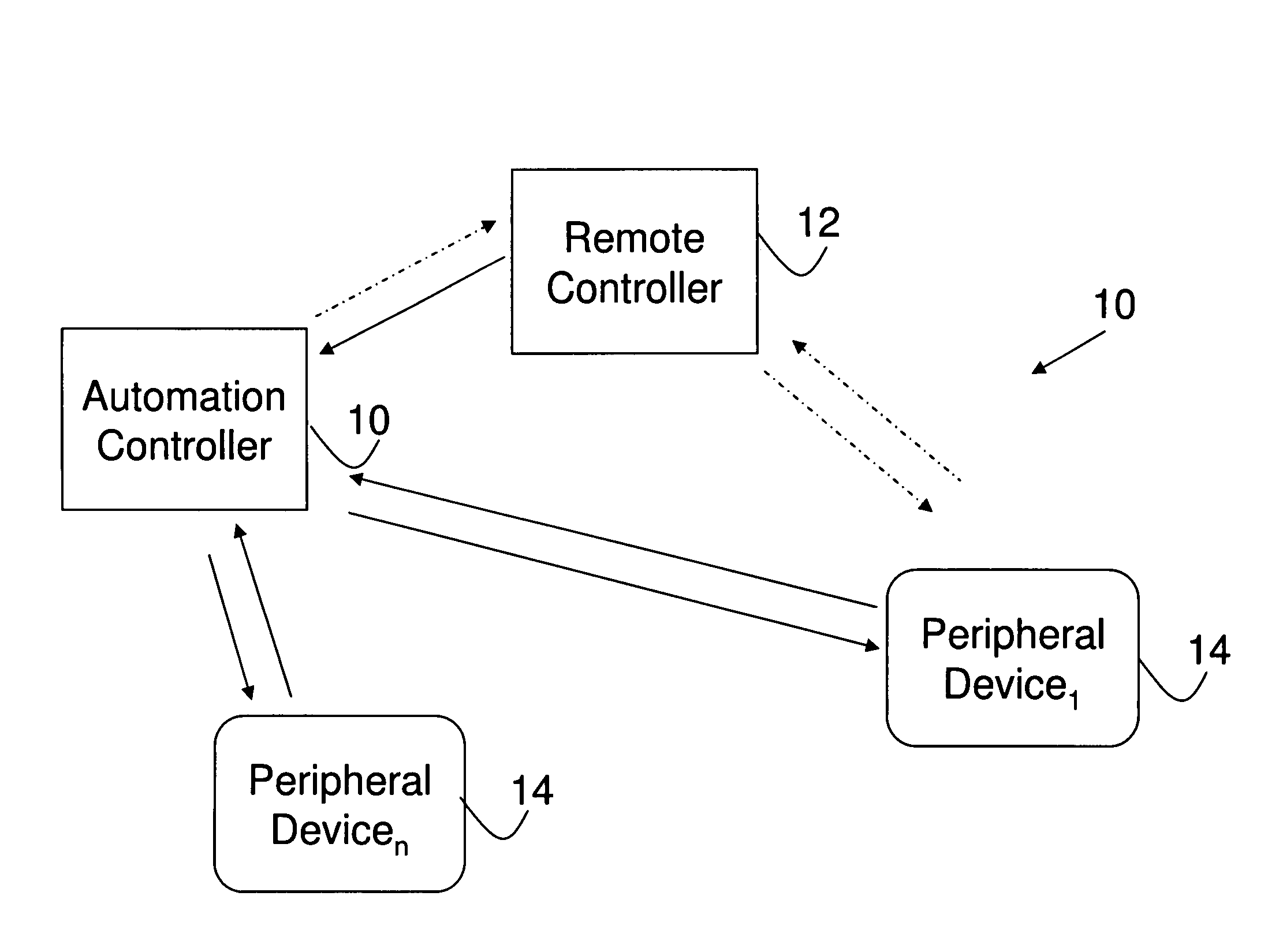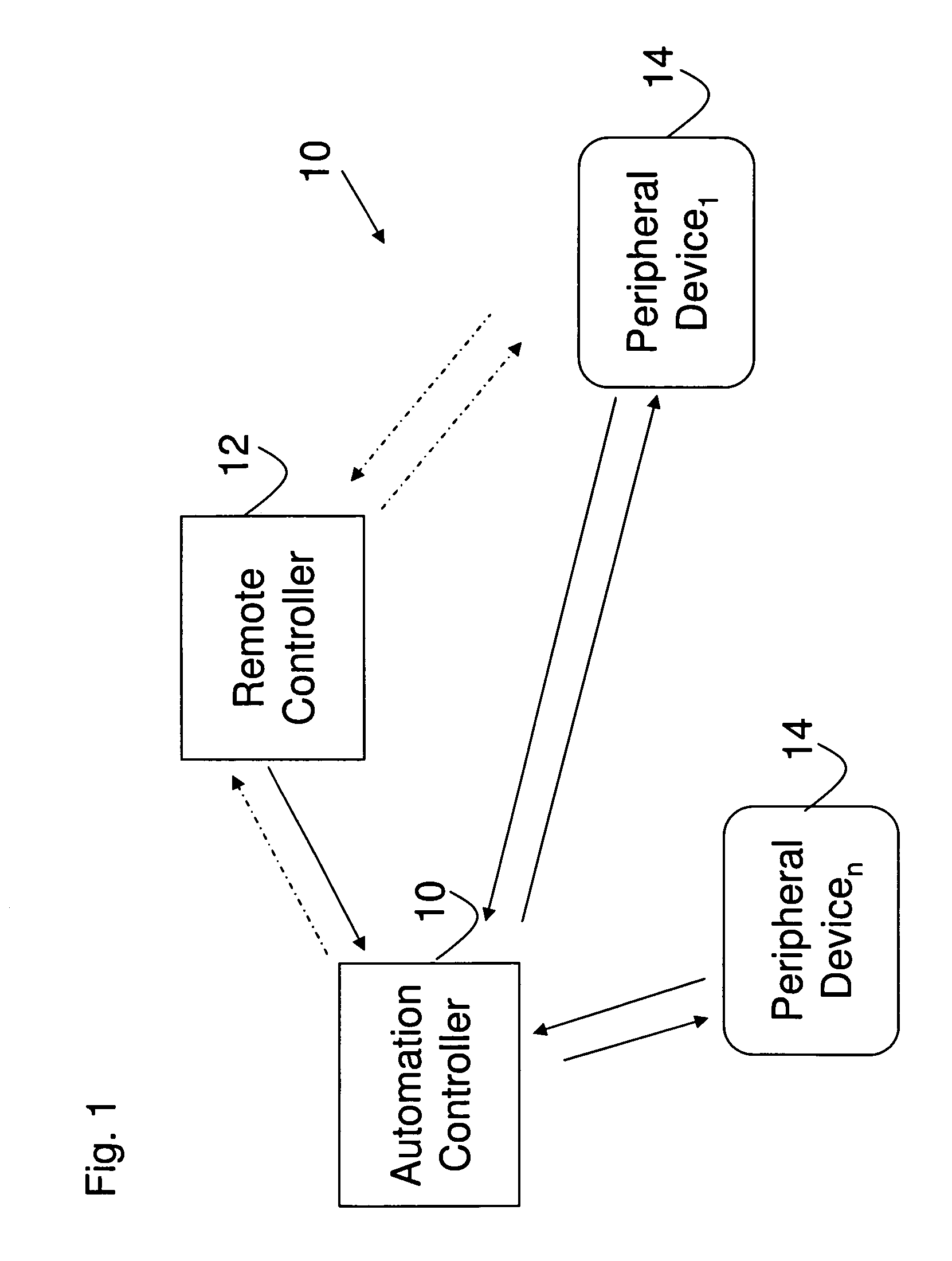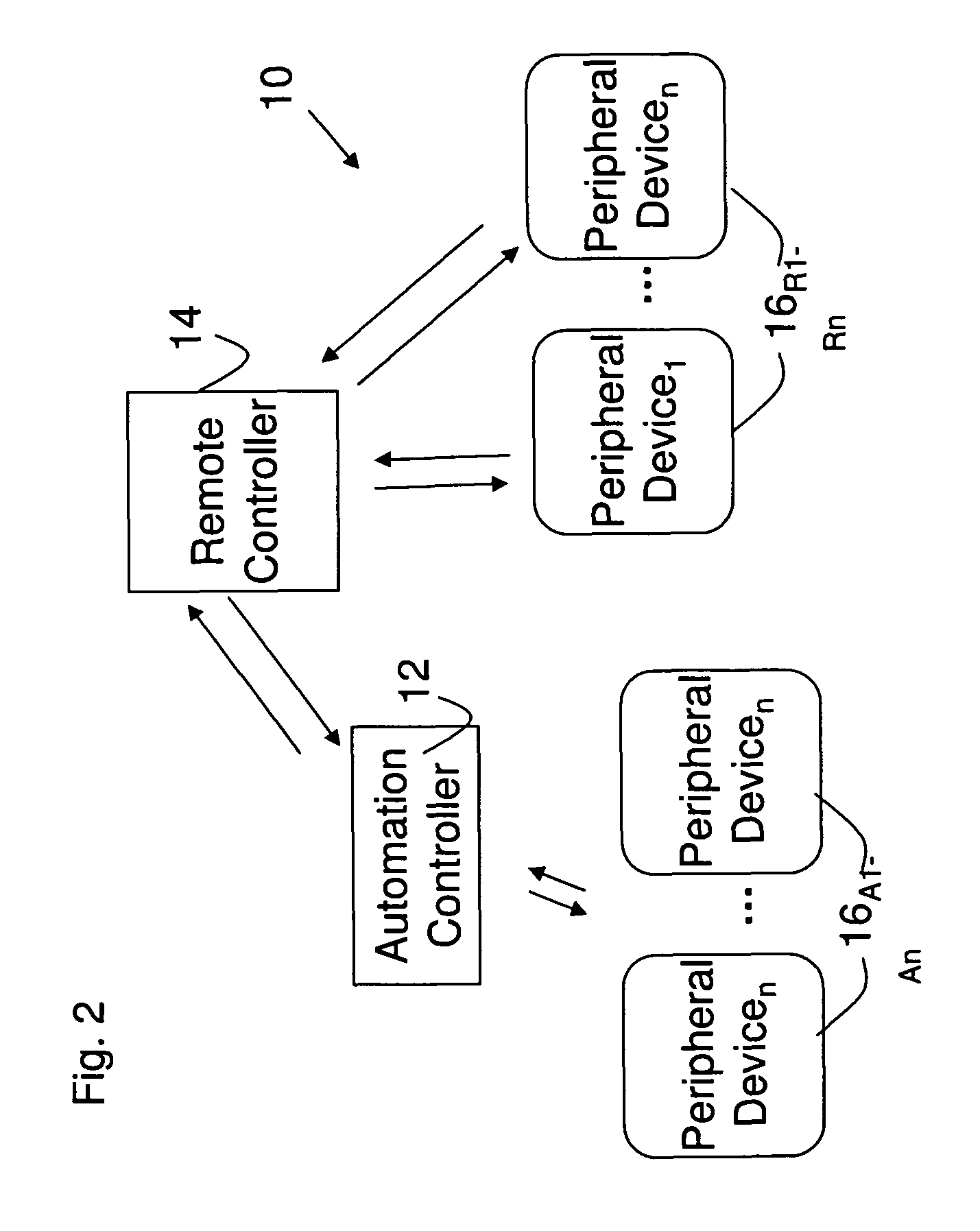Upgradeable automation devices, systems, architectures, and methods
a technology of automation devices and automation devices, applied in the field of automatic systems, can solve the problems of not substantially broadening the market for these products, and difficult implementation and maintenance of home automation systems, etc., to achieve the effect of reducing energy consumption and reducing energy cost and/or consumption
- Summary
- Abstract
- Description
- Claims
- Application Information
AI Technical Summary
Benefits of technology
Problems solved by technology
Method used
Image
Examples
Embodiment Construction
[0047]FIG. 1 depicts an automation system 10 embodiment of the present invention. The system 10 includes various components, such as an automation controller 12, a remote controller 14, and one or more peripheral devices 161-n. In this embodiment, the automation controller 12 has two way communications with the peripheral device 16 (as shown by the solid arrows). It also has at least one way communication with the remote controller 14, and, optionally two way communications with the remote controller 14 (as indicated by the dashed arrows). In addition, the remote controller 14 can have optional one or two way communications with one or more of the peripheral devices 161-n
[0048]Communication between the automation controller 12 and the peripheral devices 16 can be wired and / or wireless depending upon the particular implementation. Wired communication can make use of the power lines, local area networks, or direct links between communication ports, such as USB, RS-232 and 485, etc. W...
PUM
 Login to View More
Login to View More Abstract
Description
Claims
Application Information
 Login to View More
Login to View More - R&D
- Intellectual Property
- Life Sciences
- Materials
- Tech Scout
- Unparalleled Data Quality
- Higher Quality Content
- 60% Fewer Hallucinations
Browse by: Latest US Patents, China's latest patents, Technical Efficacy Thesaurus, Application Domain, Technology Topic, Popular Technical Reports.
© 2025 PatSnap. All rights reserved.Legal|Privacy policy|Modern Slavery Act Transparency Statement|Sitemap|About US| Contact US: help@patsnap.com



